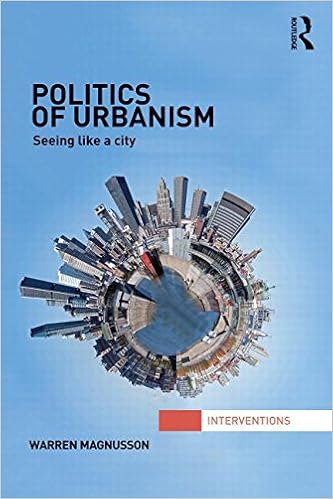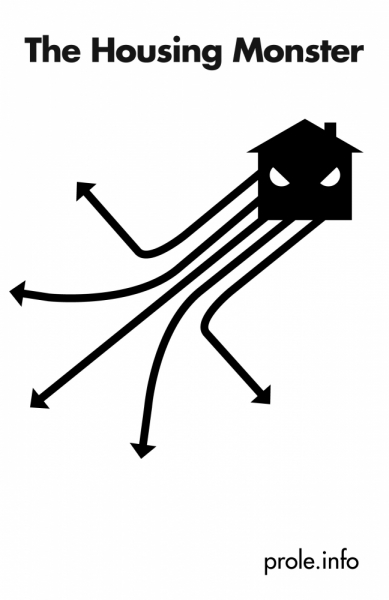[This was first published on the Project Oakland on March 21, 2012.]
Introduction:
Writings about cities are paradoxical: on the one hand, they are part of a worldwide, basically place-less culture of reflection on urban life—known as “urban studies”—and yet, on the other, they interact with the specific city that they study and are a factor in its development. They are simultaneously super global and super local.
Some cities have been more productive of urban self-reflection than others. Residents of London, Paris, and New York have been especially capable of integrating their local experiences into larger debates about urban life as such. For its part, San Francisco has become an important center for urban rumination thanks to writers like Kenneth Rexroth, Rebecca Solnit, and Chris Carlsson. But Oakland has been relatively circumspect in this regard, which is surprising, considering that it has given birth to so many dynamic political and cultural forces.
But the city does have some chronicles and, among them, Warren Hinckle’s “Metropoly: The Story of Oakland” holds an important position. Published in Ramparts Magazine nearly fifty years ago, his article was not the first appraisal of Oakland as a whole, but it was the first to treat it from the perspective of the Left. Though inevitably dated, his depiction of a conflicted, racially stratified city will resonate with contemporary residents, as will his portrayal of anxious, incompetent elites. The essay is part of Oakland’s small but meaningful legacy of urban self-reflection and deserves to be remembered.
~ Chuck Morse
– – –
METROPOLY: The Story of Oakland, California
Ramparts Magazine
February, 1966
 AS IF THE CREATION of some perverse master of idle pastimes, Oakland spreads out like a giant game board from the north shore mud flats of San Francisco Bay to the rolling hills of the coastal range. The game is “Metropoly,” and, as it is played in Oakland, it must also be played by anyone living in any American city over 250,000 persons. The object is survival, and the obstacles are chronic unemployment, racial imbalance, cultural deprivation, economic strangulation, educational disparity, housing inadequacy, en trenched power, stultifying bureaucracy, and loss of identity.
AS IF THE CREATION of some perverse master of idle pastimes, Oakland spreads out like a giant game board from the north shore mud flats of San Francisco Bay to the rolling hills of the coastal range. The game is “Metropoly,” and, as it is played in Oakland, it must also be played by anyone living in any American city over 250,000 persons. The object is survival, and the obstacles are chronic unemployment, racial imbalance, cultural deprivation, economic strangulation, educational disparity, housing inadequacy, en trenched power, stultifying bureaucracy, and loss of identity.
Playing rules are simple. If you are among the substandard income families that make up 47 per cent of Oakland’s population, you wait your turn, shake the dice, count your spaces and keep quiet. Go to jail when you are told, only pass Go when you receive permission. Pay your taxes. And above all, don’t rock the board. The rules are more lax if you are one of the elite group which makes 99 per cent of the decisions in Oakland. After all, you know the banker. Since the other players constantly have to land on your property, the rents they pay make it difficult to buy any houses or hotels themselves. Whatever property they do have will be the cheapest on the board, and the odds are that you will end up owning it too.
The analogy is familiar, but it applies with dismaying exactitude to life in Oakland, California, where the game of “Metropoly” is being played on a scale slightly below the epic.
[A GEOGRAPHY LESSON]
OAKLAND MAKES A NICE “Metropoly” game board since it is an “All American City.” Look magazine said it was, in 1955, and a plaque from the Look hangs in Oakland’s marble-walled City Hall to prove it. A red, white and blue billboard reminds motorists of this honor as they speed along Oakland’s perimeter on an elevated freeway that. slices across depressed flatlands of marginal industry and decaying housing. The view from the freeway is a city planner’s version of the seventh layer of hell: an ugly, squalid, depressing hodgepodge of commercial neighborhoods, smoke-deadened greenery and neglected residences of Victorian design and Edwardian vintage. The dominant color is gray. At the turn of the century the flatland area was a well-manicured community of bright gingerbread architecture that provided suburban housing, via ferryboat, for the more vital, if more sinful, city of San Francisco across the bay. But Oakland was doomed by its own geography. Its flatlands provide a natural base for industrial expansion of hilly San Francisco, an expansion that assumed forest-fire proportions as the twentieth century pressed on through the catalytic periods of World War I and then, World War II. Continue reading →
 Review of
Review of
 Food critics raved about The Perennial when it opened in San Francisco in January. The SF Eater called it a “palace of modern sustainability;” the Chronicle described it as the “restaurant of the future.” Even Wired Magazine sang its praises. They all celebrated its commitment to reducing its carbon footprint, which sits at the center of its identity and impacts everything that it does, from food prep, to food acquisition, to interior design. Considering that we are facing an epochal climate crisis, and that the city is sinking into the ocean, it makes an important and timely statement.
Food critics raved about The Perennial when it opened in San Francisco in January. The SF Eater called it a “palace of modern sustainability;” the Chronicle described it as the “restaurant of the future.” Even Wired Magazine sang its praises. They all celebrated its commitment to reducing its carbon footprint, which sits at the center of its identity and impacts everything that it does, from food prep, to food acquisition, to interior design. Considering that we are facing an epochal climate crisis, and that the city is sinking into the ocean, it makes an important and timely statement. Anarchists have been wrestling with the politics of the built environment since the middle of the twentieth century, if not earlier. John F. C. Turner wrote influential books on architecture, Colin Ward put out worthy studies of housing and urbanism, and there is a small shelf of anarchist-inspired works on squats. These are the most conspicuous examples, but there are many others.
Anarchists have been wrestling with the politics of the built environment since the middle of the twentieth century, if not earlier. John F. C. Turner wrote influential books on architecture, Colin Ward put out worthy studies of housing and urbanism, and there is a small shelf of anarchist-inspired works on squats. These are the most conspicuous examples, but there are many others.